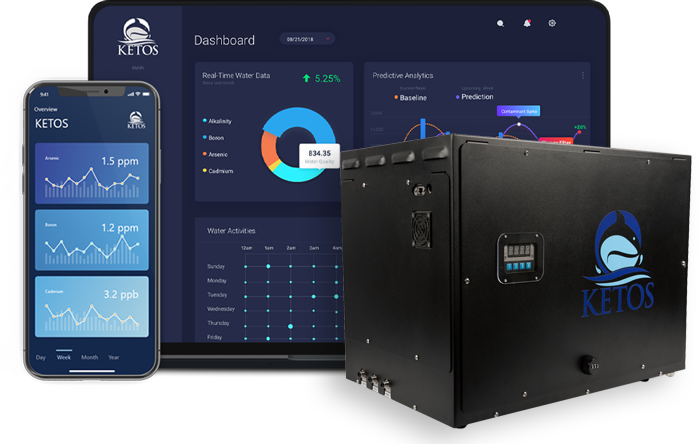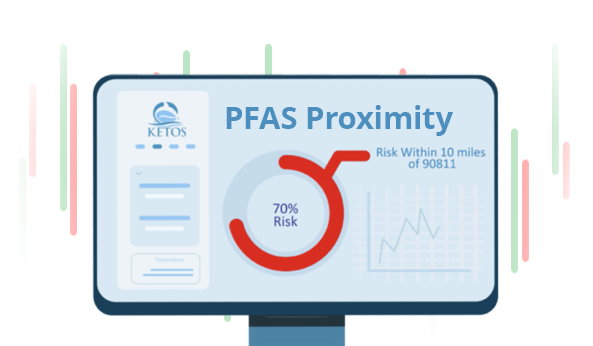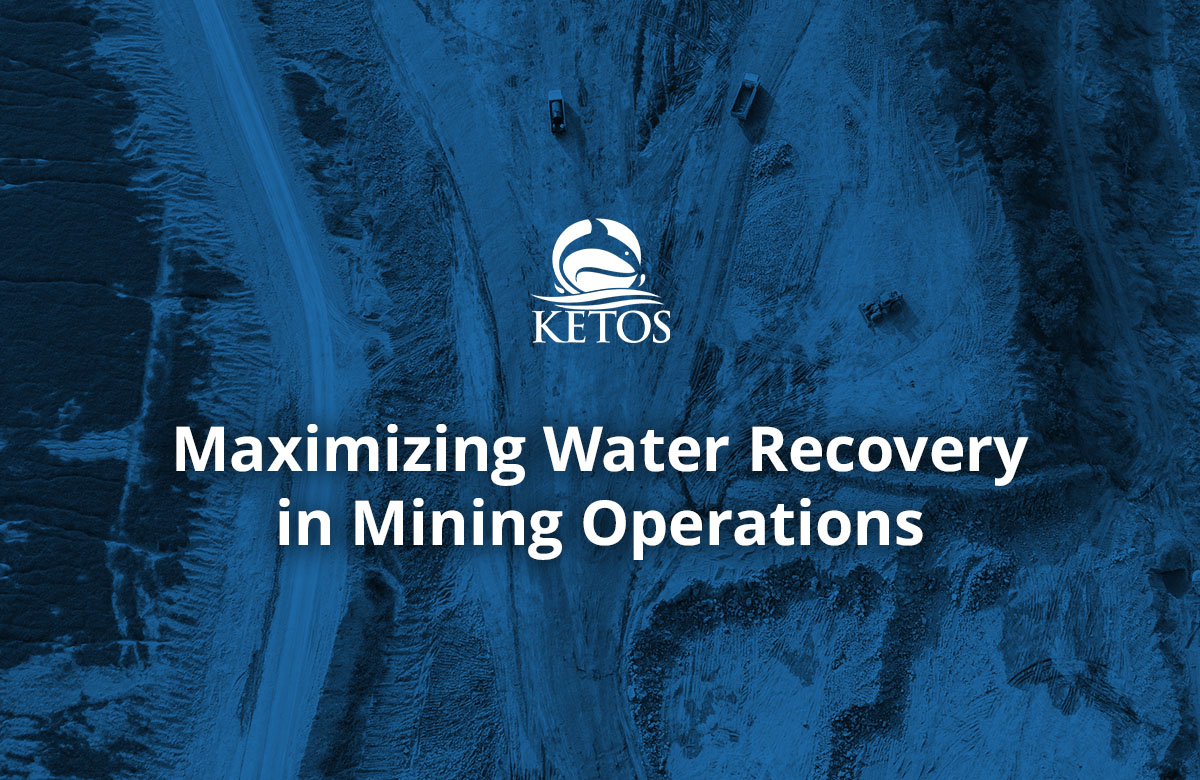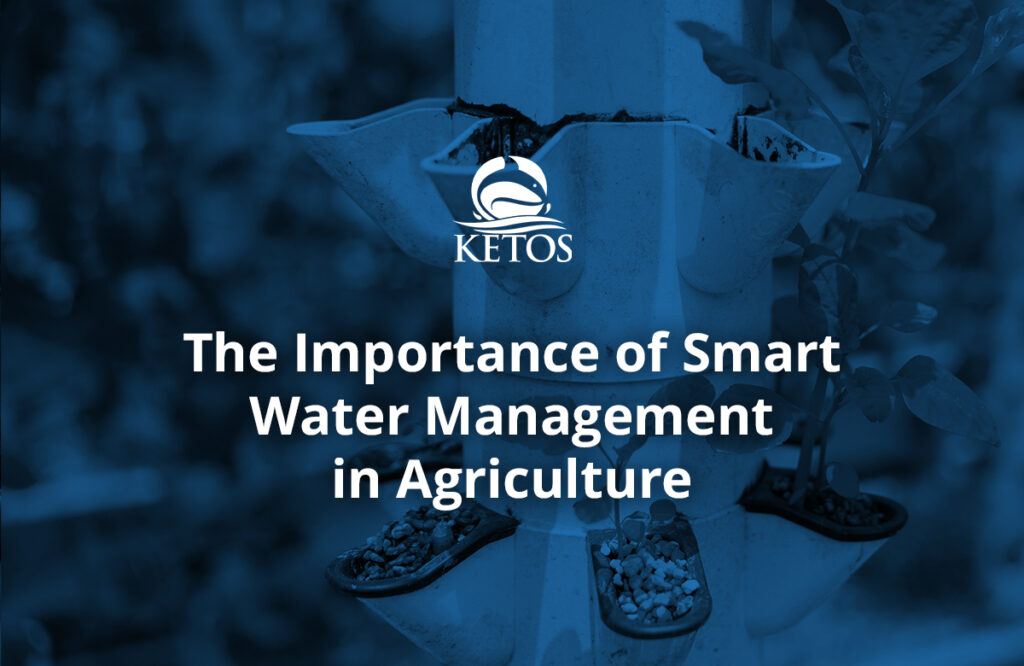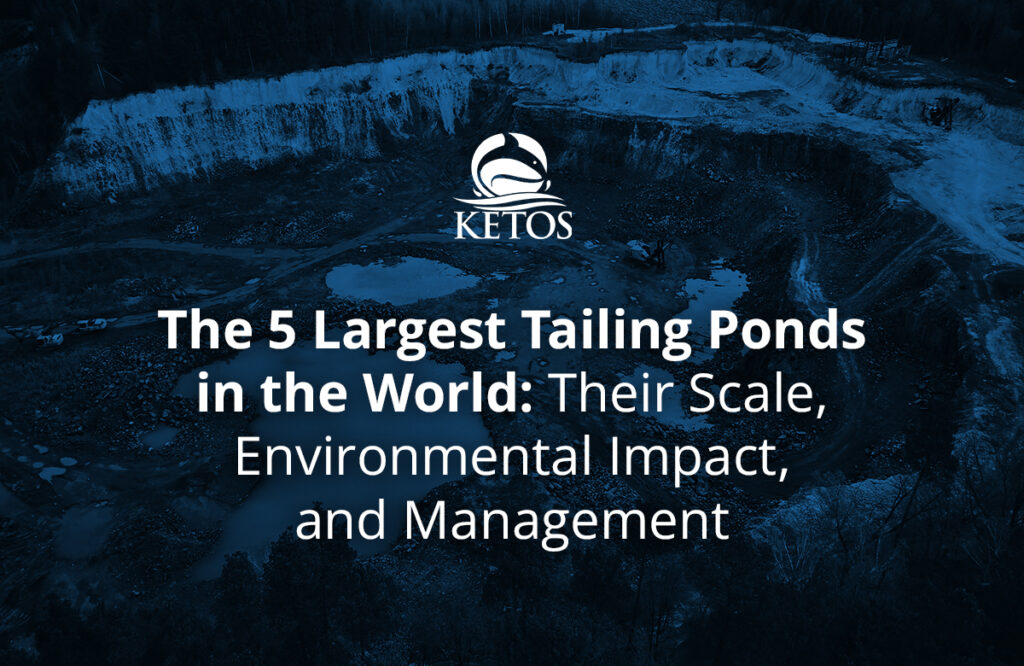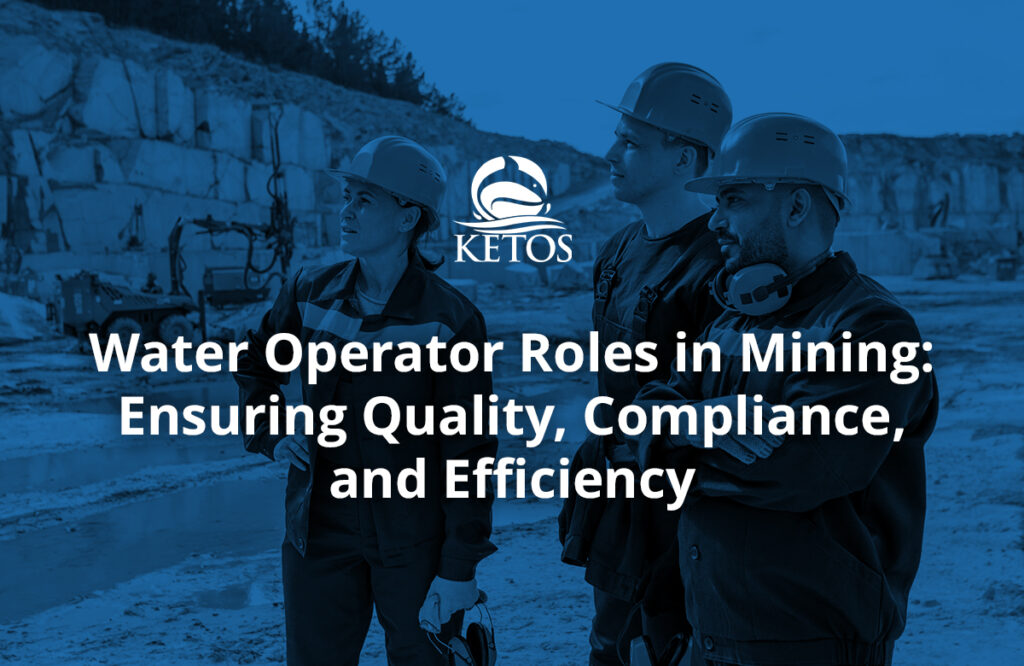Water is the backbone of mining operations, playing a critical role in everything from ore processing to dust suppression. Yet, as water scarcity and environmental regulations tighten, mines face increasing pressure to manage and recover water efficiently.
Poor water recovery leads to higher operational costs, environmental risks, and resource wastage, making it a top priority for modern mining facilities. The ability to reuse, treat, and optimize water usage not only safeguards compliance but also enhances long-term sustainability. With new technologies and smarter strategies, mining companies are transforming how they handle water, reducing waste while maintaining peak efficiency.
Water Recovery Challenges in Mining
Water management in mining is essential for ore processing, dust control, and tailings management. However, regulatory pressures, environmental concerns, and rising costs have made efficient water recovery a requirement within the mining industry. Below are the key challenges mines face in water recovery:
| Challenge | Description |
| High Contaminant Levels | Mine water contains heavy metals, sulfates, and chemicals, requiring specialized treatment to meet EPA discharge standards. |
| Scaling and Biofouling | RO membranes suffer from scaling and biofouling, reducing efficiency. Advanced antiscalants and membrane technologies help mitigate these issues. |
| Regulatory Compliance | Strict limits on TDS, sulfates, and metals require investment in high-recovery water treatment. Non-compliance can lead to fines, legal action, or shutdowns. |
| High Operational Costs | Water treatment is energy-intensive, especially chemical precipitation, membrane filtration, and ZLD, driving up costs. |
| Water Scarcity | Mines in arid regions like Chile’s Atacama Desert rely on desalination and high-recovery recycling to reduce freshwater dependence. Companies like BHP have invested in seawater pipelines to circumvent this challenge. |
Key Technologies for Water Recovery in Mining
Water recovery in mining requires a combination of innovative treatment technologies and process optimizations to reduce water loss, improve recycling efficiency, and meet environmental regulations. With increasing pressure to minimize freshwater consumption, mining operations are turning to advanced filtration, chemical, and biological systems to maximize water reuse. Below are some of the most effective technologies helping mines achieve higher water recovery rates while reducing operational costs.
1. Reverse Osmosis with Advanced Pre-Treatment
Reverse osmosis (RO) is widely used in mining water treatment, but scaling and fouling from high-salinity feedwater reduce efficiency. Cobre Las Cruces uses a three-stage RO system with 180 m³/h capacity and high-recovery units handling 50 m³/h of concentrate treatment. A six-effect evaporator further minimizes brine waste, ensuring compliance with reinjection standards equivalent to drinking water. Integrating ultrafiltration, multi-stage RO, and evaporation helps maximize water recovery while reducing scaling issues.
2. High-Density Sludge (HDS) Treatment
HDS technology is a proven solution for treating acid mine drainage (AMD) and sulfate-rich wastewater. By recycling a portion of sludge, HDS systems promote denser, more stable precipitates, reducing sludge volume and disposal costs.
At the Brukunga pyrite mine in Australia, switching from Low-Density Sludge (LDS) to HDS increased sludge solids from 3-5% to 42%, cutting sludge handling costs by 50% (~$30,000 AUD annually). Improved reagent efficiency also allowed for more AMD treatment per tonne of lime, while enhanced aeration and polymer flocculants optimized metal precipitation. These upgrades, along with ongoing site rehabilitation, have significantly reduced long-term AMD treatment needs.
3. Zero Liquid Discharge (ZLD) Systems
ZLD provides a closed-loop water recovery solution for mining operations in water-scarce regions, ensuring minimal wastewater discharge. These systems integrate ultrafiltration, reverse osmosis, and crystallization to recover nearly all water, leaving only dry solids. In Chile’s Atacama Desert, mining operations increasingly rely on desalination and ZLD to secure water supply. Meanwhile, global ZLD adoption is rising, particularly in China, India, and Australia, where strict regulations mandate wastewater recovery. As environmental policies tighten, more mining companies are implementing ZLD to reduce water waste, optimize reuse, and comply with sustainability goals.
4. Real-Time Water Quality Monitoring
Automated monitoring systems like the KETOS SHIELD provide real-time tracking of key water parameters such as pH, turbidity, and metal concentrations. By integrating IoT sensors and cloud-based analytics, mines can optimize treatment efficiency, reduce manual sampling, and prevent compliance violations before they occur. Remote monitoring also improves operational control, ensuring that process water quality remains consistent.
5. Biological Sulfate Reduction (BSR)
BSR uses sulfate-reducing bacteria (SRB) to convert sulfates into sulfides, effectively treating sulfate-laden mine water. Studies at Leviathan Mine demonstrated 95% metal removal, increasing pH from 3.0 to 7.0, and treating flows up to 30 gpm year-round. The system utilizes ethanol as a carbon source and includes aeration channels to mitigate H₂S buildup. Over time, the bioreactor transitioned to recirculation mode, reducing chemical use while maintaining efficiency. Despite seasonal access challenges, the Leviathan Mine bioreactor remains a proven model for long-term BSR implementation in treating acid rock drainage.
5 Best Practices for Maximizing Water Recovery in Mining
Efficient water recovery in mining is essential for reducing environmental impact, cutting operational costs, and ensuring long-term sustainability. Implementing advanced water management strategies can significantly improve reuse rates, minimize waste, and enhance compliance with evolving regulations. Below are five key practices that leading mining operations are adopting:
1. Optimize Water Treatment System Design
Mining operations face fluctuating water chemistry due to seasonal changes, ore variations, and process adjustments. Implementing modular water treatment units ensures flexibility in scaling up or adjusting treatment based on quality fluctuations. IFC’s work in water infrastructure highlights the importance of long-term, adaptable water solutions, especially as climate change impacts water availability and wastewater treatment needs. High-efficiency treatment solutions such as reverse osmosis (RO), membrane filtration, and chemical precipitation allow mines to maintain optimal recovery rates while adapting to changing conditions.
2. Reduce Brine Production with High-Recovery RO
Brine disposal is a major challenge in mining wastewater management. High-recovery RO systems use multi-stage filtration and evaporation to minimize brine generation while maximizing water reuse. Advancements in high-pressure RO membranes, such as Brine Conversion Reverse Osmosis (BCS systems), enable recovery rates of up to 60%, reducing energy costs, brine waste, and environmental impact. Implementing optimized brine management strategies, including concentrate treatment and reuse, ensures sustainable and efficient water use in mining operations.
3. Automate Water Quality Monitoring
Real-time data monitoring enables mining operators to track contaminants, flow rates, and treatment efficiency without relying on manual sampling. IoT-based monitoring solutions provide continuous oversight, instantly detecting changes in pH, turbidity, and metal concentrations. Companies like Rio Tinto have successfully integrated automated water monitoring, reducing compliance violations and labor costs. With real-time analytics, mining operations can proactively adjust treatment processes, ensuring efficient and sustainable water management.
4. Recover Water from Tailings Ponds
Tailings ponds are one of the largest sources of water loss in mining operations. Implementing advanced filtration and dewatering technologies, such as paste thickening, centrifugation, and dry stacking, can recover up to 90% of water from tailings streams. Innovative tailings management methods, including in-pit storage and optimized thickening, reduce environmental risks while improving water efficiency. Additionally, water loss reduction strategies, such as rainwater harvesting and closed-loop water recycling, further enhance sustainability by minimizing freshwater dependency. Mines that have transitioned to dry stacking methods report improved tailings stability, lower seepage risks, and greater compliance with environmental regulations.
5. Leverage Predictive Analytics for Water Optimization
AI-powered predictive analytics enable mining companies to forecast equipment failures, adjust treatment processes in real-time, and optimize water recycling rates. By analyzing historical water quality data, machine learning models can predict filtration performance, prevent membrane fouling, and recommend proactive maintenance, reducing downtime and improving water recovery efficiency.
By integrating modular treatment technologies, automation, and predictive analytics, mining companies can drastically improve water recovery rates, reduce regulatory risks, and operate more sustainably. Industry leaders have demonstrated that real-time water management and process optimization lead to lower operational costs and increased water reuse, making these best practices essential for modern mining operations.
Smart Water Recovery with KETOS
As mining companies embrace data-driven water management, real-time monitoring and automation are transforming efficiency, compliance, and sustainability. KETOS provides a fully integrated water intelligence platform designed to optimize water recovery and treatment.
Key Features of KETOS Smart Water Recovery:
- 24/7 Automated Water Quality Monitoring – Continuously track influent, effluent, and process water in real time.
- AI-Powered Analytics & Alerts – Prevent compliance violations with predictive insights and automated alerts.
- Predictive Maintenance – Detect potential system failures early, reduce downtime, and optimize treatment efficiency.
- Cloud-Based Data Management – Manage water quality across multiple mining sites with a centralized platform.
By adopting smart water recovery solutions, mining operations can lower costs, improve sustainability, and ensure compliance with evolving environmental regulations.
Get in touch with us today to learn how KETOS can transform your water management strategy. Request a demo now!
